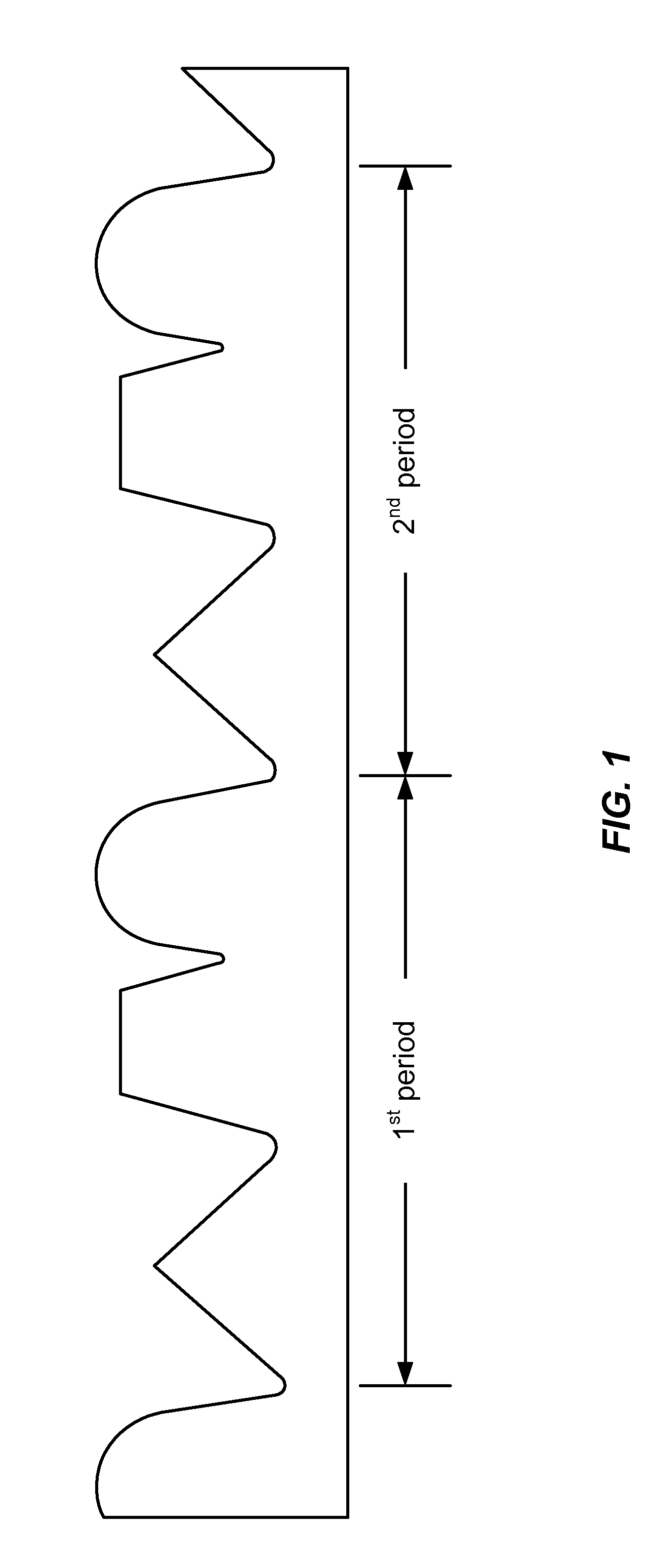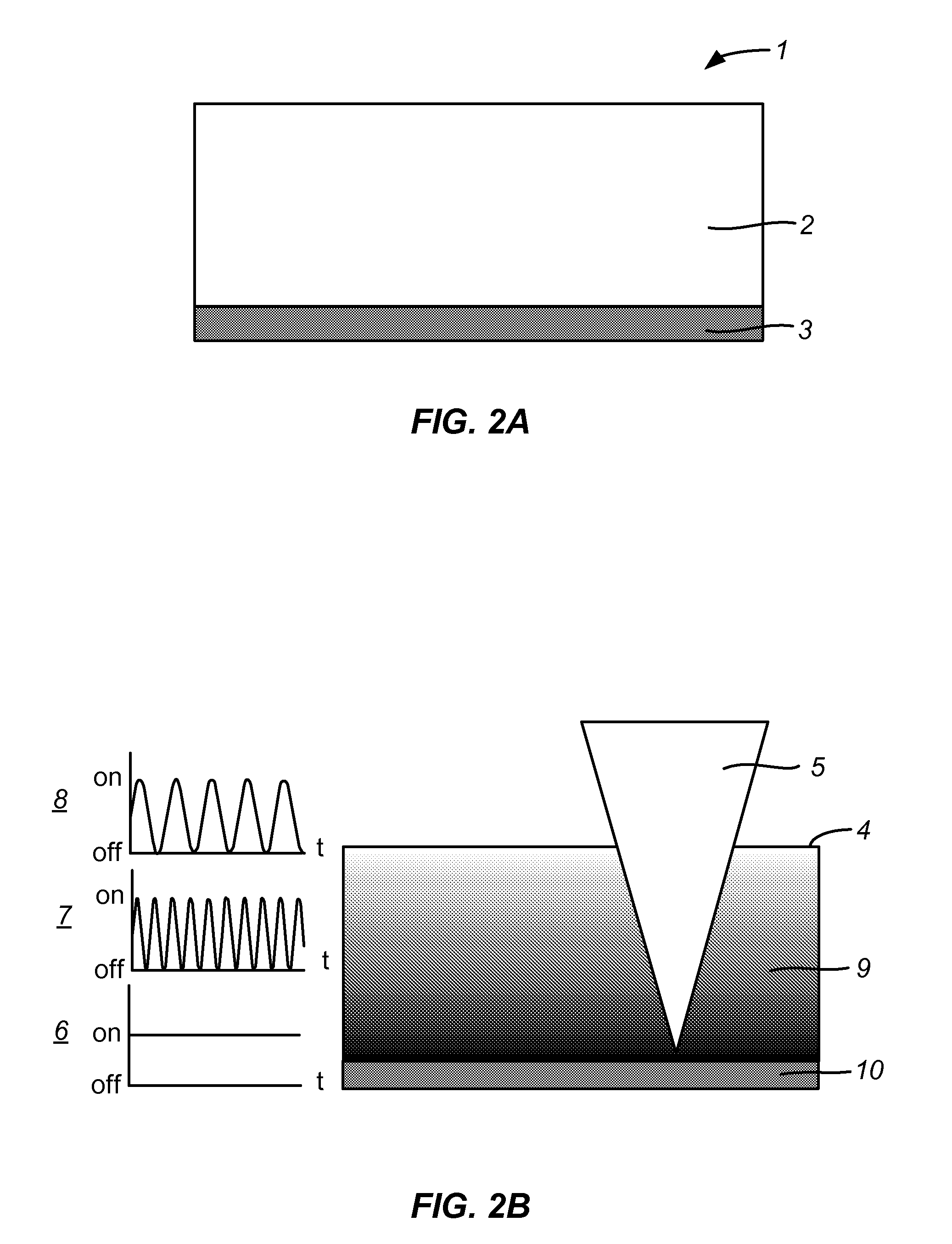Electrochemical cell including functionally graded and architectured components and methods
a technology of functional graded and architectured components and cells, applied in the field of electrochemical cells, can solve the problems of limited lifetime, premature failure, drawbacks of conventional cells, etc., and achieve the effect of eliminating costly trial and error in construction and superior properties of designed cells
- Summary
- Abstract
- Description
- Claims
- Application Information
AI Technical Summary
Benefits of technology
Problems solved by technology
Method used
Image
Examples
example 1a
functionally graded electrode and its manufacturing technique
[0046]In FIGS. 2A and 2B, a functionally graded graphite anode is created by focusing a laser beam through polymer electrolyte layer by layer gradually from current collector to some desired distance toward the surface of the polymer electrolyte with decreasing the frequency of turning on-and-off the laser beam as the focus point of the laser beam is gradually moved away from the current collector. The electrode 1 comprises of polymer electrolyte (LiPF6 plus polyethyleneoxide, PEO) 2 coated on top of copper current collector 3 as detailed described in FIG. 2A. Because of the high-energy of the Nd:YAG laser beam 4, the polymer in polymer electrolyte, where the laser beam is aimed, will be graphitized as 9 in FIG. 2B. Also, because of decreasing the frequency of turning on-and-off the laser beam (as shown in 6 to 8 in FIG. 2B), the area of graphitized polymer in one layer will be decreased. Hence, concentration of the graphi...
example 2 manufacturing
of a Microarchitectured Electrode
[0047]In FIGS. 3A, B, and C, a microarchitectured LiMn2O4 cathode having a periodic but non-arbitrary geometry is made using a silicon (Si) substrate 11 as a template. A Nd:YAG laser 13 is used to machine the substrate and remove material 14, creating a set of channels and ridges that follows a predetermined geometry obtained using a Computer Aided Design (CAD) software as 12. The design is reflecting minimization of intercalation stresses in the LiMn2O4 material according to computer simulations. Once the substrate machining is completed conformal material layers are deposited using physical vapor deposition (PVD) onto the substrate. Respectively, a first titanium (Ti) 18 attachment layer, having a thickness of 50 Å or less, followed by a second aluminum (Al) layer 19, having a thickness of 500 nanometers or higher, to serve as cathode current collector. After deposition of the current collector, the active material (LiMn2O4) 20 is formed following ...
example 3 manufacturing
of a Nanocomposite Material for Electrode
[0048]In FIGS. 4A, B, C, and D, a LiMn2O4 partially stabilized cathode is fabricated by depositing conformal material layers using physical vapor deposition (PVD). The same procedure illustrated here can be used with or without the pre-existence of a substrate 22. In this latter case, the current collector is also serving as substrate material 22. A first layer of LiMn2O4, 23, is deposited having a thickness of 100-500 nanometers. After the first layer is completed a mask, 26, having geometric features of 100 nanometers or higher, is applied onto it and a layer of Li2MnO3, 29, is deposited. Finally the mask is removed and another layer of LiMn2O4, 34, having a thickness of 100-500 nanometers, is deposited to embed the Li2MnO3 features previously created.
[0049]Alternatively to using a mask, sputtering of Li2MnO3 can be employed to create irregular second phase regions on the first layer followed by a layer of LiMn2O4, having a thickness of 100...
PUM
| Property | Measurement | Unit |
|---|---|---|
| resistivity | aaaaa | aaaaa |
| resistivity | aaaaa | aaaaa |
| size | aaaaa | aaaaa |
Abstract
Description
Claims
Application Information
 Login to View More
Login to View More - R&D
- Intellectual Property
- Life Sciences
- Materials
- Tech Scout
- Unparalleled Data Quality
- Higher Quality Content
- 60% Fewer Hallucinations
Browse by: Latest US Patents, China's latest patents, Technical Efficacy Thesaurus, Application Domain, Technology Topic, Popular Technical Reports.
© 2025 PatSnap. All rights reserved.Legal|Privacy policy|Modern Slavery Act Transparency Statement|Sitemap|About US| Contact US: help@patsnap.com



